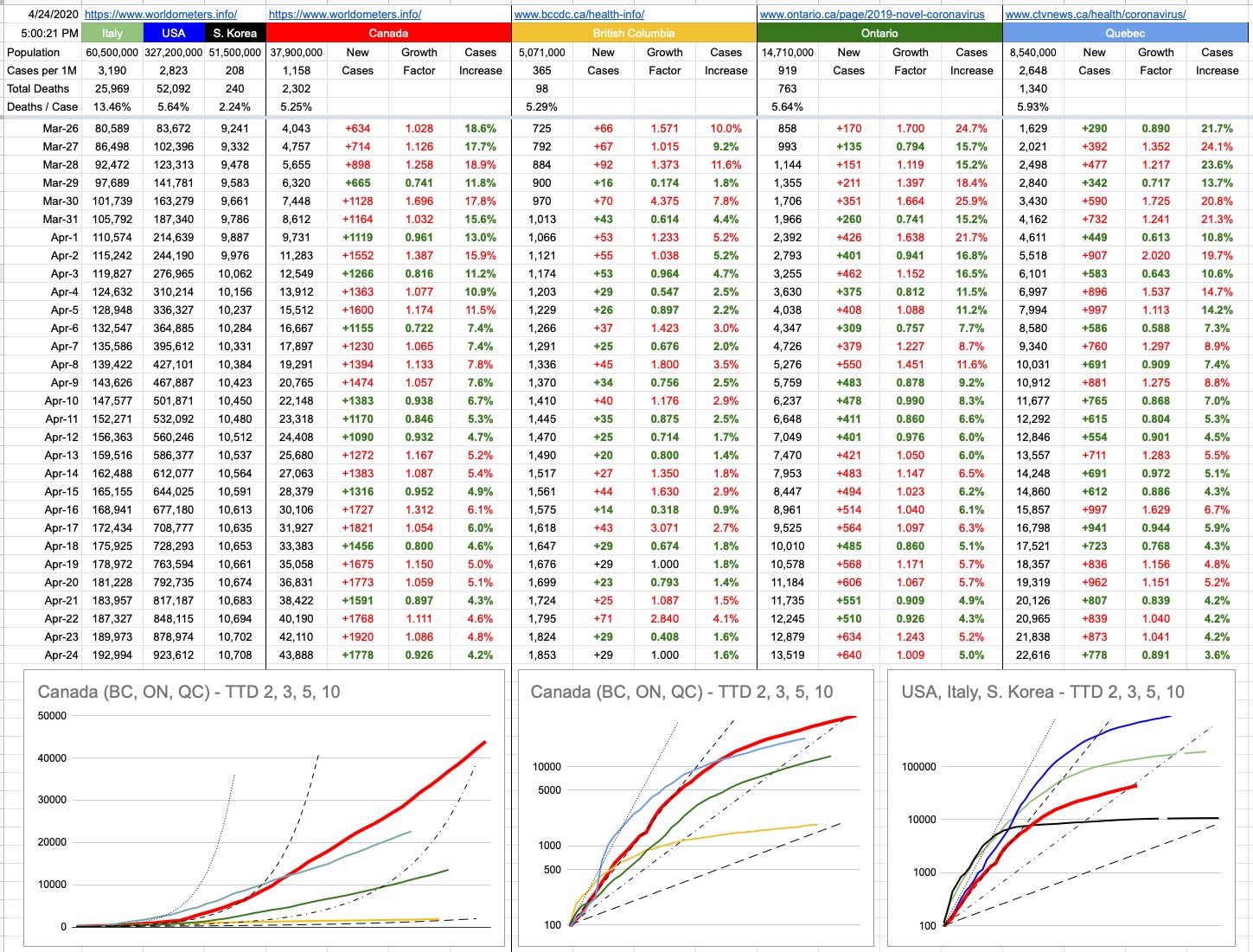Day 45 – April 30, 2020
On my list of lifetime achievements, there’s one I’m particularly proud of… because it’s one that many people have attempted, but very few have succeeded… and it’s this: I fought a speeding ticket in court, and won. Not because the cop didn’t show up; he did, and we had a nice chat before we went in to the courtroom. I outlined exactly what I was going to say to the judge, and the cop listened thoughtfully to everything I said… and then unilaterally decided to drop the case. We walked into the court, he announced that that crown had chosen not to proceed on these charges, and aside from a rather curious look from the judge (I guess this doesn’t happen that often), that was it. Case dismissed, and I walked out of there 3 points and $138 wealthier than when I walked in.
I had a lot of arguments that I threw at the cop, but I think the one that resonated most was this… that while I was indeed speeding as measured against the number painted on the sign at the side of the road, so was everyone else. In fact, when he stopped me, I asked him… why me? Everyone is going the same speed here. And he agreed; he even said so… “I could’ve pulled over any one of you”.
If you assume, for the most part, that the majority of people aren’t idiots, then you can rightfully assume that, for the most part, people, when acting in their own self-interest, might be mirroring what’s in the best self-interest of the greater good. Yes, I do understand the other point of view… because I often feel it while driving… that guy who’s driving slower than you: idiot. That guy that speeds past you: maniac. Those are the two types of drivers that exist, besides you, who’s the only one doing it properly. But the reality is that at any given point, we’re someone else’s idiot or maniac… and when you average it all out, most of us are in the same boat.
If the speed limit is 50 — well, actually, forget the posted limit for a moment. Granville St. on a quiet sunny Sunday morning at 7am in the middle of Summer… vs. Granville St. at 6pm on Friday in the Winter when it’s dark, maybe icy and cold and rainy and everyone is trying to rush to get home but traffic is a mess. In the first case, mostly open road, it might not feel out of place to be driving 80. In the second case, it’s hard to be going faster than 30, and possibly not safe to do so. In both cases, the posted limit is still 50, but it’s possible in neither case for that to be the appropriate speed at which to be driving.
Indeed, back to the initial crucial point. At any given point on Granville St, measure the average speed that everyone is going over a period of 10 minutes. That’s probably the safest speed. Set that as the speed limit, for the moment, and ticket everyone exceeding it by 20km/h or more. And also, ticket everyone going more than 20km/h slower than that. In my opinion, someone who’s going 30 on Granville and causing an angry back-up of traffic is far more dangerous than one guy who speeds by. Speed differential is the key thing… not just measuring it against an arbitrary number that someone came up with, and which coincidentally is the same speed limit as a tiny side-street a block away. Yeah, the speed limit one block east or west of Granville is 50km/h. Granville is 6 lanes, but a side-street is two at most, with parked cars and oncoming traffic having to wait for you to go by. Try driving 50 there… see how safe that feels; it doesn’t, so people don’t.
And so it is with 3 territories, 10 provinces, 50 states and 200 countries all giving conflicting directives as to how to behave. Many people in places with questionable directives have taken it upon themselves to govern themselves according to what makes sense to them. The state says it’s ok to go to gyms and bowling alleys and nightclubs? Nice, but I think I’ll stay away. The country says going to pubs and restaurants and church is no big deal? Sure, but maybe we’ll keep a social distance and not take grandma with us.
There’s still a lot of emerging data and opinion as to what’s safe and what isn’t. The “better safe than sorry” playbook, now shifting to “cautious optimism” has been very successful here in B.C., and our reward is an emerging opening-up — one we’ve earned, and will get to enjoy as long as we follow the rules we have in place which, at least around here — fortunately — make a lot of sense.
I’ll drive 30 when it makes sense, and I’ll drive 70 when it makes sense… not because I’m happy to go about breaking laws, but because it’s what reasonably makes sense to me at that time, and I’m happy to explain my reasons, and I’m happy that there are people around here who’ll listen to reason and go along with it. And if all 5 million people in B.C. and 38 million people in Canada think that way, we’ll be ok. And to be clear, I’m not suggesting you go speeding everywhere. But if everyone around you is “speeding” and if everyone is choosing to not gather in large groups or go to gyms — if you’re not sure how it’s supposed to work, look around. Most of us are OK drivers. And most of us understand what we need to do these days. Just go with that.
View Original Post and All Comments on Facebook











